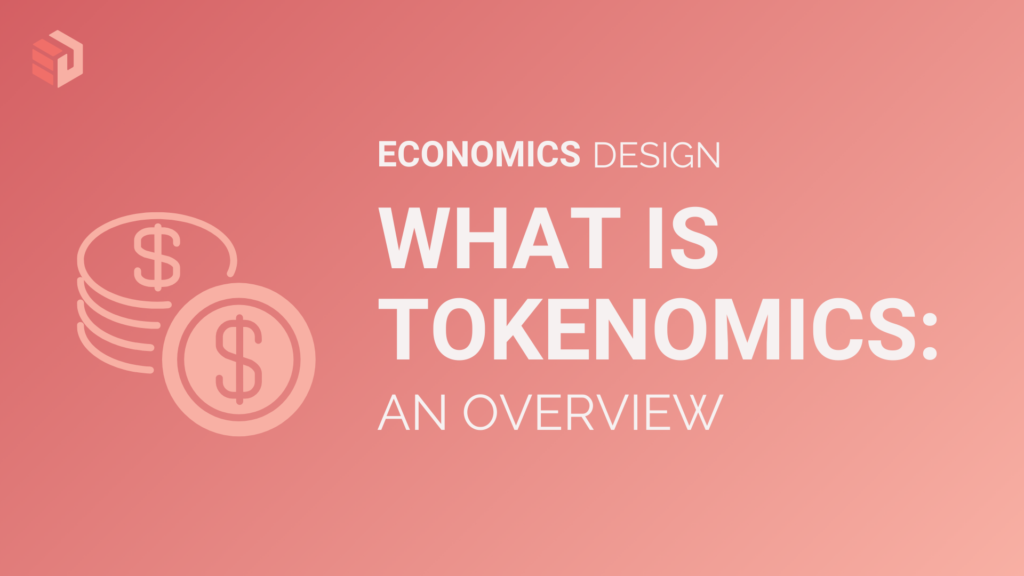
Are you looking to get up to speed on the concept of tokenomics and how it works within an organization? Maybe you’re a Web2, Web3, GameFi or DeFi project founder who wants to understand the underlying economics that power your space.
Tokenomics is becoming increasingly important in these types of projects because it governs both successful distribution strategies and long-term value-creation initiatives. In this blog post, we will give an overview of what tokenomics is, why it’s so significant for modern blockchain organizations and how understanding them can help ensure success.
General concept & definition of tokenomics
Tokenomics refers to the study of the interaction between the stakeholders of a decentralized network. This concept is highly relevant in the world of blockchain technology, which relies on decentralized systems to ensure transparency, security, and efficiency. Tokenomics has several components, including token distribution, token supply, token utility, and token governance. Token distribution refers to how tokens are allocated to stakeholders, while token supply deals with the overall amount of tokens in circulation. Token utility refers to the purpose of tokens and their value within the system. Lastly, token governance governs how decisions are made regarding the network’s operation. Understanding the intricacies of tokenomics is crucial for anyone looking to engage in decentralized networks and their associated cryptocurrency tokens.
Tokenomics in cryptocurrency projects – How the tokenomics model affects a project’s success
In the world of cryptocurrency projects, tokenomics plays a crucial role in determining the extent to which a project can thrive and succeed. Tokenomics here refers to the study of how developers design the token’s characteristics, supply, and distribution system within a blockchain network. The tokenomics model can have a direct impact on a project’s value and adoption rate. A well-designed tokenomics model can lead to increased liquidity, stability, and overall demand for the token, thereby contributing to the project’s success. Thus, developers and investors need to pay attention to tokenomics while assessing the potential of a cryptocurrency project.
Types of tokens
Cryptocurrency has changed the way we think about finance, and tokens play an important role in this new landscape. There are two main types of tokens: utility and security. Utility tokens give holders access to a particular product or service, while security tokens give investors a stake in the company or project they represent. Both types of tokens can be traded on the market, and they offer investors a chance to come aboard exciting new ventures. The rising popularity of tokens means that more and more companies are using them as a way to fundraise and attract investors. As the market continues to evolve, it will be interesting to see how tokens shape the future of finance.
The importance of tokenomics
It is essential to understand how tokens are created, distributed, and valued within a project’s ecosystem. Without a strong understanding of tokenomics, investors may miss out on potentially lucrative opportunities or fall victim to scams and fraudulent projects. Therefore, it is crucial that investors research and analyse the token economics of any cryptocurrency project they are considering investing in. By doing so, they can make informed decisions and navigate this growing digital industry effectively.
Token metrics
Token metrics play a crucial role in determining the value and potential of a given token. These metrics are essentially a set of measurements used to analyse various aspects of a token, such as its market capitalisation, circulating supply, and trading volume. By examining these metrics, investors and traders can make informed decisions about whether to buy, sell or hold a particular token. But with a plethora of metrics available to choose from, it can be difficult to know which ones to focus on. In this article, we’ll explore the most common token metrics and examine what they can tell us about the potential of a given token.
Trends in tokenomics
Over the past few years, the world of tokenomics has been witnessing a surge of new developments and trends. From DeFi to NFTs, these digital tokens have become increasingly popular and complex, and new use cases are emerging every day. One of the biggest changes we are seeing is the shift towards more decentralized financial systems, where traditional financial institutions are being replaced by blockchain-based platforms. This new paradigm offers many exciting opportunities for investors and entrepreneurs alike, as the industry continues to grow and evolve. At the same time, the regulatory landscape is also evolving, with many governments and regulators looking to step in to ensure that these new financial products are safe and secure for consumers. All of these changes and trends are sure to have a significant impact on the future of tokenomics and the broader blockchain industry, making it an exciting time for anyone interested in this rapidly changing field.
In conclusion
The concept of tokenomics is essential to the success of any project. A deep understanding of tokenomics can be beneficial to all investors, allowing them to assess value and potential. Additionally, there are numerous types of tokens available on the market, each offering unique benefits and risks that should be considered when investing. In recent years, we have seen several trends emerging in the field of tokenomics that provide new opportunities and possibilities for cryptocurrency projects. Ultimately, whether you’re a casual investor or a serious trader, being aware and educated about how tokenomics works is critical to succeeding in the world of cryptocurrency investment. Take the time to understand all aspects of tokenomics before investing in any project. Finally, if you’re interested in exploring tokenomics further, consider subscribing to our newsletter to learn more!
